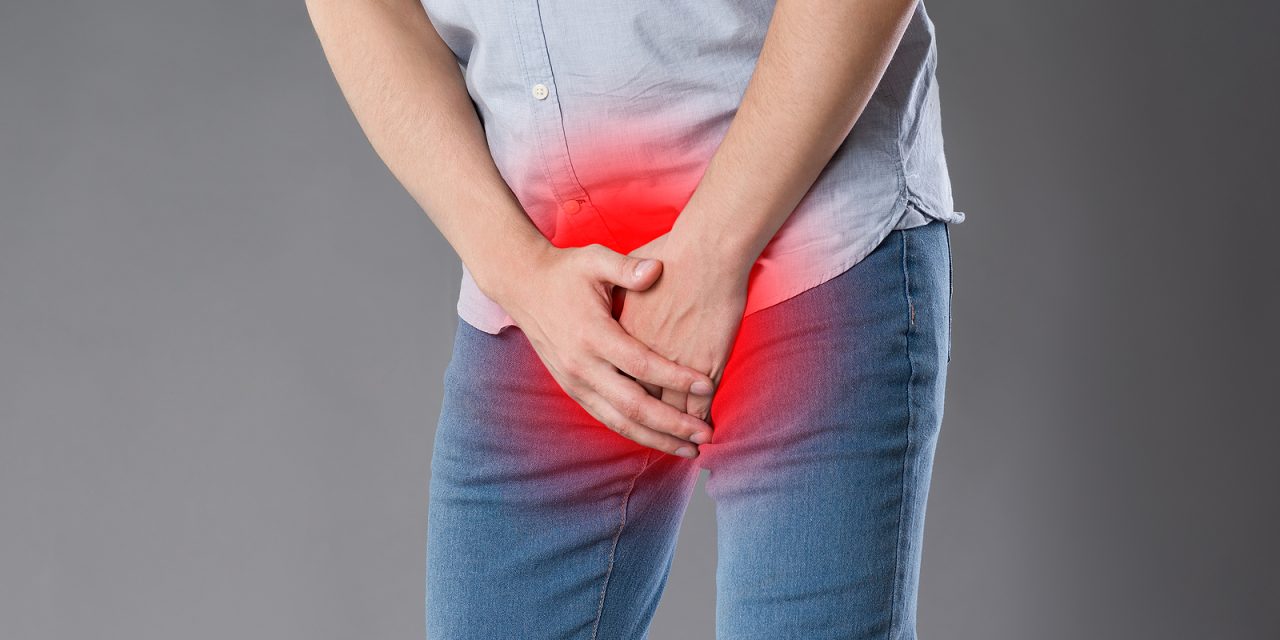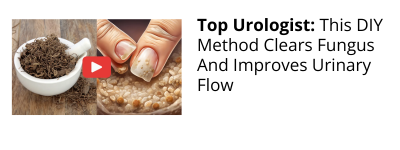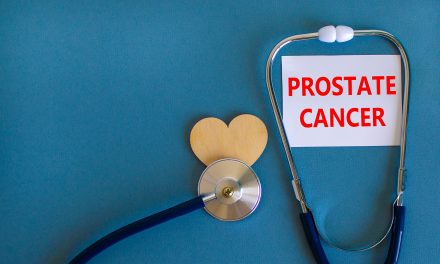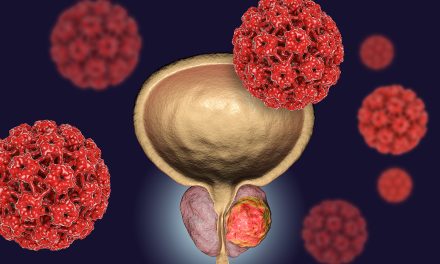The prostate, a small gland situated just below the bladder and surrounding the urethra, plays a pivotal role in the urinary system of individuals with male reproductive organs. This gland is responsible for providing fluids that accompany sperm during ejaculation. However, as men age, the prostate often grows more extensive, a condition medically known as benign prostatic hyperplasia (BPH). This enlargement can press against the urethra and disturb normal bladder function, leading to urinary symptoms.

Symptoms related to prostate enlargement can significantly affect quality of life. Individuals may experience a frequent need to urinate, difficulty starting and maintaining urination, a sensation of not fully emptying the bladder, and even urinary tract infections. Sometimes, if the bladder cannot drain properly, it can lead to bladder or kidney damage. Recognizing these symptoms early and seeking medical consultation are crucial steps toward managing the condition effectively.
Key Takeaways
- The prostate gland is crucial in male urinary function and can contribute to various urinary symptoms as it enlarges.
- Prostate enlargement may lead to complications such as urinary tract infections and bladder damage if not treated.
- Early detection of prostate-related urinary symptoms is critical for effective management and treatment.
Understanding the Prostate
The prostate gland is a critical component of the male reproductive system, positioned to influence both urinary and sexual health. Its relationship with the bladder is particularly significant, as it encircles the urethra below this urine-storing organ.
Anatomy of the Prostate Gland
The prostate is a small, muscular gland about the size of a walnut located below the bladder and in front of the rectum. It surrounds the urethra, which is the tube that carries urine from the bladder out through the penis. This strategic placement means that changes in the size or shape of the prostate can directly affect urination.
Prostate Functions in the Body
Functionally, the prostate is part of the male reproductive system. It produces a fluid that forms part of semen, offering both nutrition and protection for sperm during ejaculation. The muscles of the prostate gland also help propel this fluid into the urethra during ejaculation, contributing to fertility.
Prostate Growth and Aging
As men age, the prostate can undergo significant changes that often impact urinary function. Two notable aspects of this process are the development of Benign Prostatic Hyperplasia (BPH) and the Influence of Age on Prostate Health.
Benign Prostatic Hyperplasia (BPH)
Benign Prostatic Hyperplasia (BPH) is a common condition where the prostate enlarges. This enlargement is often linked to hormonal changes, including converting testosterone to dihydrotestosterone (DHT). Elevated levels of DHT in the prostate can cause the cells to multiply, increasing its size. Symptoms may include difficulties in urination, such as a weak urine stream or a stream that starts and stops. Treatments range from medications to surgery, depending on severity.
Influence of Age on Prostate Health
Age is a significant factor influencing prostate health. Over time, a man’s body produces less testosterone, which can affect prostate size and function. The aging process may lead to benign prostatic hyperplasia, and by the age of 60, approximately 50% of men show symptoms. It’s not just the size of the prostate that matters but also how it affects bladder control and urinary flow.
By understanding these aspects of Prostate Growth and Aging, men can better manage their prostate health through regular check-ups and timely treatment.
How the Prostate Affects Bladder Function
The prostate gland, by its anatomical location around the urethra, can significantly influence bladder health and the flow of urine. Prostatic enlargement can lead to a variety of urinary symptoms affecting a person’s quality of life.
Impact on Urine Flow
Enlargement of the prostate, medically termed benign prostatic hyperplasia (BPH), can constrict the urethra, which runs through the center of the prostate. This constriction often results in a decreased caliber and force of the urinary stream. Additionally, BPH can manifest as intermittent urination, where the flow of urine starts and stops, and hesitancy, the difficulty in initiating urination despite the urge.
Urinary Retention and Infections
Urinary retention, the inability to empty the bladder, may occur as a result of significant prostatic obstruction. Stagnant urine in the bladder can lead to urinary tract infections (UTIs), which, if left untreated, may ascend the urinary tract, potentially causing a bladder infection or, more severely, a kidney infection. Moreover, chronic urinary retention can also contribute to bladder stone formation and reduced kidney function.
Symptoms Indicating Prostate Problems

Prostate-related bladder problems often manifest through urinary and sexual symptoms. Recognizing these signs is crucial for timely treatment and management.
Recognizing the Signs of Prostate Issues
Individuals with prostate problems might experience several urinary symptoms, prominently including:
- Frequent urination: An urgent need to urinate, often at night, disrupts sleep patterns.
- Weak urine stream: A flow that may start and stop and is more vulnerable than usual.
- Inability to urinate: Difficulty starting to urinate or completely voiding the bladder.
These symptoms can be indicators of conditions like benign prostatic hyperplasia (BPH) or prostatitis, each requiring medical attention.
Sexual Function and the Prostate
The prostate has a significant impact on sexual function, and issues with this gland can lead to:
- Erectile dysfunction (ED): Difficulty in achieving or maintaining an erection.
- Ejaculation problems: Discomfort during ejaculation or changes in the appearance of semen.
Sexual problems can often coexist with urinary symptoms and may contribute to emotional issues, such as depression, due to their effect on quality of life and self-esteem. It’s vital to consult healthcare professionals for both physical and emotional symptoms related to prostate problems.
Complications Arising from Prostate Enlargement
Prostate enlargement, medically known as benign prostatic hyperplasia (BPH), can lead to significant complications affecting the urinary tract system, including bladder and kidney functions. Two serious consequences that demand attention are the development of bladder stones and kidney damage, as well as a negative impact on an individual’s quality of life.
Bladder Stones and Kidney Damage
When the prostate gland enlarges, it can obstruct urine flow, leading to incomplete bladder emptying. This stasis of urine can result in the formation of bladder stones—hardened mineral deposits that can cause pain, blood in the urine, and infection. If bladder stones are present, one may experience a frequent or urgent need to urinate or a painful burning sensation during urination.
In more severe cases, the obstruction and resulting retention of urine may lead to kidney damage. Over time, the pressure from urine that cannot flow freely may cause the kidneys to swell, a condition known as hydronephrosis. This can progress to kidney problems, potentially leading to impaired kidney function or even kidney failure.
Impact on Quality of Life
An enlarged prostate can have far-reaching effects on one’s daily living, significantly deteriorating the quality of life. Individuals may experience chronic pelvic pain syndrome associated with persistent discomfort in the pelvic region. This pain, combined with the consistent need to urinate, can interrupt sleep and make it difficult to engage in social activities or maintain a regular work schedule, leading to frustration and increased stress.
Difficulty in managing the basic physiological need of urination due to BPH can extend to various aspects of life, including emotional and psychological health, and warrants effective management strategies to alleviate symptoms.
Diagnostic Procedures for Prostate Health

It is critical to understand the role of the prostate in overall health and how its condition directly impacts the bladder. Regular screening and examinations are essential to early detection and effective management of prostate-related issues.
Importance of Prostate Screening
Prostate screening is fundamental in identifying potential problems at an early stage, particularly prostate cancer. Men are advised to consult with their healthcare provider about when to begin screening, especially if they have a family history of prostate cancer. The decision to start regular screenings is typically based on individual risk factors and life expectancy.
Tests and Examinations
Several tests and examinations are used to assess prostate health:
- Prostate-specific antigen (PSA) blood test: This examines the level of PSA, a protein produced by the prostate. Elevated levels may indicate enlargement, inflammation, or cancer.
- Digital rectal exam (DRE): A healthcare professional inserts a gloved, lubricated finger into the rectum to check the size, shape, and texture of the prostate.
- Transrectal ultrasound: This imaging test provides detailed pictures of the prostate using sound waves.
- Prostate biopsy: If initial tests suggest abnormalities, a biopsy is performed to collect tissue samples from the prostate for further examination under a microscope.
Each test varies in preparation and procedure, but they all serve the common purpose of maintaining prostate health and ensuring the early detection of any conditions that might affect the bladder or overall well-being.
Medical and Surgical Treatments

Effective management of prostate issues often involves medications or surgical interventions, optimizing bladder function, and alleviating symptoms for patients. Let’s explore the specific treatments that are in use today.
Medications for Prostate Issues
For many men, medication is the first line of treatment for prostate-related bladder issues. Alpha-blockers such as tamsulosin and doxazosin can help relax the muscle fibers in the prostate and bladder neck, making urination easier. Another class of drugs, 5-alpha reductase inhibitors, including finasteride and dutasteride, may shrink the prostate over time and can prevent further urinary complications. Medications can often alleviate symptoms without the need for more invasive procedures.
Surgical Options for Treatment
When medications are not sufficient, surgery may be recommended. Minimally invasive procedures have gained popularity due to less risk and quicker recovery times. Transurethral resection of the prostate (TURP) is a joint surgery involving the removal of prostate tissue through the urethra. Another option, open prostatectomy, is typically reserved for severely enlarged prostates and entails removing prostate tissue through an incision in the lower abdomen. Both procedures can significantly improve urinary flow and symptoms.
Lifestyle Modifications and Preventative Measures

Making specific lifestyle changes can significantly affect prostate health and, in turn, bladder function. These changes include adopting a nutritious diet, maintaining regular physical activity, and managing body weight.
Diet, Exercise, and Obesity
Diet: A nutritious diet plays an essential role in maintaining prostate health. Men should include foods known to benefit the prostate, such as fruits and vegetables that are rich in antioxidants and healthy fats from fish that are high in omega-3 fatty acids. Limiting the consumption of red meat can also be beneficial. Foods rich in lycopene, such as tomatoes, have been associated with prostate health.
Exercise: Regular physical activity helps keep the body at a healthy weight and can effectively reduce obesity—a factor associated with a higher risk of prostate problems. Exercises such as aerobics and resistance training are beneficial, but individuals should consult their healthcare provider for tailored advice.
Obesity: Maintaining a healthy weight is crucial for prostate health. Excess weight, particularly around the waist, can increase the risk of prostate issues and potentially affect bladder control. Weight management can be addressed through a balanced diet and consistent exercise routine.
Preventing Prostate Issues
Making lifestyle changes is a proactive way to potentially lower the risk of prostate issues that could affect bladder function. In addition to diet and exercise, avoiding smoking and limiting alcohol intake are critical preventative steps. Regular screenings, especially for those at higher risk, allow for early detection and more effective management of prostate conditions. Managing stress is also an overlooked yet crucial aspect of prostate health. It is also essential for men to be aware of how an enlarged prostate affects the bladder and the symptoms that may require medical attention.
Emerging Therapies and Research

With ongoing medical advancements and extensive research, new therapies are being developed to mitigate the impact of prostate issues on bladder health. This section explores the latest developments and anticipates the future of prostate-related bladder treatments.
Advancements in Prostate Medicine
Recent studies in prostate medicine have indicated that new medications and treatment strategies are proving effective in addressing urinary dysfunction following prostate cancer therapy. One such advancement is focused on reducing the incidence of incontinence, characterized by frequent leakage or lack of control. When performed by a skilled surgeon, innovative surgical techniques have reduced the necessity for absorbent pads to fewer than 10% of men within three years post-prostatectomy, showcasing a significant improvement in post-treatment quality of life. Additionally, as detailed by Johns Hopkins Medicine, understanding the precise surgical impacts on the urinary tract has led to better management of side effects.
Emerging medicines have also demonstrated potential in minimizing symptoms caused by the enlargement of the prostate gland. For example, innovations in hormone therapy and targeted molecular treatments are currently under research, which aim to provide relief without the side effects of more invasive treatments.
Future Directions in Treatment
Looking ahead, the landscape of prostate-related bladder condition treatment is set to evolve with research focusing on the integration of precision medicine. This involves tailoring treatment to individual genetic profiles, potentially increasing the effectiveness of therapies while minimizing adverse effects. Furthermore, advancements in imaging techniques are anticipated to improve diagnosis and allow for more precise targeting during treatment.
Clinical trials continue to be a driving force in discovering new treatments. The JAVELIN Bladder 100 trial illustrates the ongoing search for optimal therapeutic approaches in managing advanced prostate and bladder cancer, which aims to introduce interventions that extend survival rates and enhance the quality of life.
By continuing to foster innovation in both medicines and treatment methodologies, experts in urology and oncology aim to create a future where the impact of the prostate on bladder function can be managed more effectively and with greater patient satisfaction.
Support and Resources

Navigating life with prostate conditions requires reliable information and a robust support system to maintain quality of life. Patients with chronic prostatitis or other prostate problems have a variety of resources at their disposal to manage their symptoms effectively.
Living with Prostate Conditions
Living with prostate issues such as benign prostatic hyperplasia or chronic prostatitis often means needing to seek out strategies to manage symptoms that can affect daily life. It is important for patients to:
- Understand their condition: They should know how and why their prostate affects their bladder function.
- Take active steps: Simple lifestyle changes like reducing caffeine intake can be beneficial.
- Engage in physical activity: Regular exercise can help reduce urinary problems linked with prostate conditions.
For condition-specific guidance and management techniques, patients can refer to the Bladder & Bowel Community for tips on how to make living with benign prostatic hyperplasia more comfortable.
Support Networks and Counseling
Emotional and psychological support is critical for those dealing with chronic conditions, including prostate problems. Support networks can:
- Offer comfort: Sharing experiences in similar situations can provide relief and understanding.
- Provide tips: Insight on managing symptoms and treatment information can significantly assist those newly diagnosed.
Professional counseling can also help patients cope with the emotional burden of a chronic condition like prostatitis. Moreover, it can empower them to improve their mental health, which is critical to their well-being.
Men looking for peer or professional support resources can find valuable connections through organizations like the Prostate Cancer Foundation.
Frequently Asked Questions

This section answers common questions about the impact of prostate health on bladder function and available treatment options.
What is the typical cause of an enlarged prostate?
The most common cause of an enlarged prostate, or benign prostatic hyperplasia (BPH), is age-related hormonal changes. The prostate naturally grows as men get older, which can lead to enlargement.
How does prostate enlargement impact sexual function?
What are the most effective treatments for an enlarged prostate?
Medications, minimally invasive therapies, and surgery are considered effective treatments for an enlarged prostate. Treatment choice depends on the severity of symptoms, prostate size, and overall health.
How can prostate size be reduced through natural methods?
Natural methods to manage prostate health include a balanced diet, regular exercise, and specific herbal remedies. However, these methods should supplement medical treatment and not replace consultations with a healthcare provider.
Can you completely cure an enlarged prostate?
While there is no complete cure for an enlarged prostate, symptoms can be effectively managed and reduced. Surgical treatments can offer long-term relief for many individuals, but regular monitoring and lifestyle adjustments are essential for ongoing management.
What strategies can help soothe both the prostate and bladder?
Strategies include managing fluid intake, performing pelvic floor exercises, and avoiding bladder irritants. Also, prescribed medications can help alleviate symptoms that affect both the prostate and bladder.
















